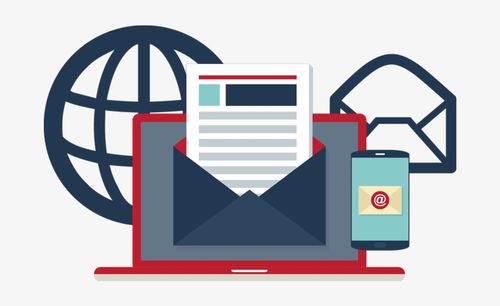In the world of online security and user authentication, email verification plays a pivotal role in ensuring the integrity of user accounts. When it comes to email verification, two primary methods are widely used: verification links and verification codes. As an expert in the field, I'll guide you through the intricacies of both methods, providing insights and best practices to help you choose the right one for your platform. Whether you're a developer, product manager, or business owner, this comprehensive guide will empower you to make an informed decision about email verification.
The Significance of Email Verification
Before we dive into the debate between email verification links and codes, let's first understand why email verification is crucial:
User Authentication: Email verification ensures that users are who they claim to be, enhancing the security of your platform.
Account Recovery: It provides a means for users to recover their accounts if they forget their passwords or encounter other issues.
Reduced Fraud: Verifying email addresses helps mitigate fraudulent sign-ups and unauthorized access.
Communication: It enables your platform to communicate with users effectively, including sending important updates and notifications.
Now, let's explore the pros and cons of both email verification methods.
Email Verification with Links
Pros of Email Verification Links:
User-Friendly: Clicking a link is straightforward and user-friendly, requiring minimal effort from the user.
Instant Verification: It provides immediate confirmation of the email address's validity.
Enhanced User Experience: Real-time confirmation enhances the user experience and fosters trust in your platform.
Cons of Email Verification Links:
Link Expires: Verification links can expire, causing frustration for users who don't verify their email promptly.
Blocked Links: Some email clients may block or mark verification links as spam, affecting email deliverability.
Limited Offline Use: Users who want to verify their email without an internet connection may encounter issues.
Email Verification with Codes
Pros of Email Verification Codes:
Extended Validity: Verification codes typically have longer validity periods, reducing the risk of expiration-related issues.
Enhanced Privacy: Codes can be transmitted more securely, reducing the chances of interception.
Offline Verification: Users can verify their email even without an internet connection by entering a code.
Cons of Email Verification Codes:
User Effort: Users must manually enter the code, which can be less convenient than clicking a link.
Potential Errors: Manual entry can lead to typographical errors, resulting in failed verification attempts.
Delayed Confirmation: Verification codes may take longer to reach users' inboxes compared to instant links.
Choosing the Right Method for Your Platform
The choice between email verification links and codes depends on your platform's specific needs and priorities. Consider the following factors when making your decision:
User Experience: If providing a seamless user experience is paramount, email verification links are often preferred.
Security: If you prioritize security and user privacy, email verification codes may be the better choice.
Offline Accessibility: Consider whether your users are likely to need offline verification options.
Verification Duration: Evaluate how quickly users are expected to verify their email addresses and whether link expiration could be an issue.
Email Client Compatibility: Take into account the email clients your users commonly use and how they handle verification links.
Error Handling: Consider how your platform will handle verification failures due to typos or other errors.
Best Practices for Email Verification
Regardless of the method you choose, here are some best practices for implementing email verification effectively:
Clear Communication: Provide clear instructions to users on the verification process, including what to do if they encounter issues.
Timely Reminders: Send reminders to users who haven't verified their email addresses to increase completion rates.
Fallback Methods: Consider offering multiple verification options, such as both links and codes, to accommodate user preferences.
Secure Transmission: Ensure that verification codes and links are transmitted securely to users' email addresses.
User Education: Educate users about the importance of email verification and how it benefits them.
Common Pitfalls to Avoid
When implementing email verification, be mindful of common pitfalls:
Overly Complex Processes: Don't make the verification process unnecessarily complicated, which could deter users from completing it.
Ignoring User Feedback: Pay attention to user feedback regarding verification issues and make improvements as needed.
Failing to Secure Data: Ensure that user email addresses and verification data are stored securely to protect user privacy.
Excessive Email Sending: Avoid sending too many verification emails, as this can be perceived as spam.
Ineffective Reminders: Poorly timed or overly frequent reminders can irritate users rather than encourage verification.
Frequently Asked Questions
1. Is email verification necessary for all platforms?
Email verification is essential for platforms that require user accounts and where user data and security are priorities.
2. Can I use both email verification links and codes on my platform?
Yes, offering both options allows users to choose their preferred verification method.
3. How long should verification links or codes be valid?
The validity period depends on your platform's requirements. Consider a reasonable timeframe that balances user convenience and security.
4. What happens if a user enters an incorrect verification code?
Provide clear instructions for users on how to rectify the situation, such as resending the code or requesting assistance.
5. Should I store email verification data?
It's generally a good practice to store verification data securely for auditing and user support purposes.
In conclusion, email verification is a critical component of user authentication and security. The choice between verification links and codes depends on your platform's specific needs and user experience goals. By considering the factors outlined in this guide and following best practices, you can implement effective email verification that enhances security, user trust, and overall platform functionality.



